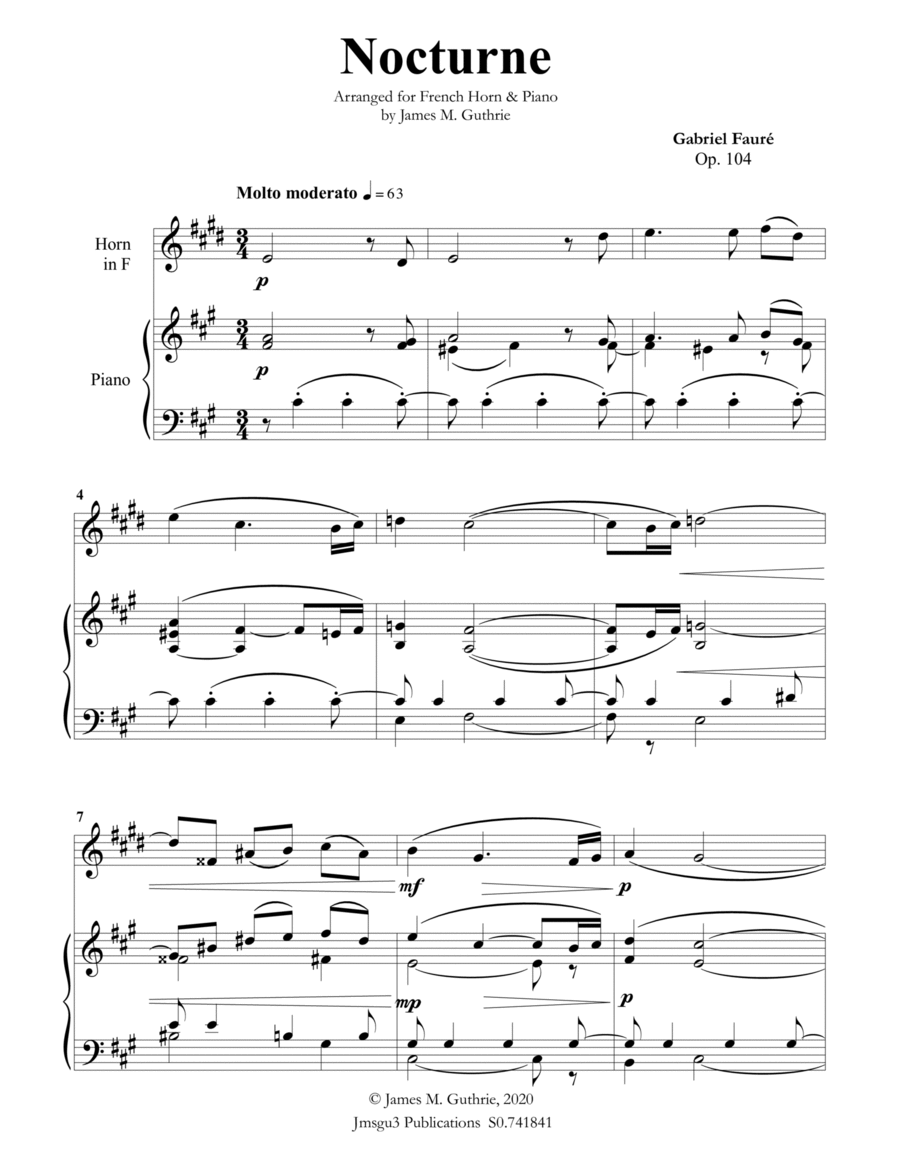French Horn,Piano - Level 3 - Digital Download SKU: A0.551616 Composed by Gabriel Faure. Arranged by James Guthrie, ASCAP. Instructional,Romantic Period,Standards. Score and part. 16 pages. Jmsgu3 #5324393. Published by jmsgu3 (A0.551616). Gabriel Fauré: Nocturne, Op. 104, Molto moderatoNocturne is a musical composition inspired by or evocative of the night. The Irish composer John Field first used the term in the early 19th century to describe a type of character piece for piano intended to be played in the evening or at night. The term was later adopted by other composers, including Chopin and Fauré, who used it to describe their compositions. In the case of Fauré's Nocturne Op. 104, the title nocturne refers to the fact that it is a piece of music intended to be played at night or evocative of the night. The piece is characterized by its modal, incantatory theme, which seems to hark back to the plainchant that Fauré studied at the Niedermeyer School. Like other nocturnes in the set, it explores one predominant mood.Fauré's Nocturne Op. 104 and Chopin's nocturnes share some similarities, but they also have some differences. Fauré greatly admired the music of Chopin and was happy to compose in forms and patterns established by the earlier composer. Fauré's early nocturnes employ the same basic textures as Chopin's nocturnes, but Fauré's later works abandon this in favor of increasingly contrapuntal writing. Fauré also adopted ternary form as an essential form for the piece from Chopin. However, Fauré's melodies often show a rigorous motivic construction not found in Chopin. Fauré's nocturnes are, after Chopin's, among the most beautiful and beloved in music literature. In summary, while Fauré's nocturnes were influenced by Chopin's, they also have unique qualities that set them apart.
